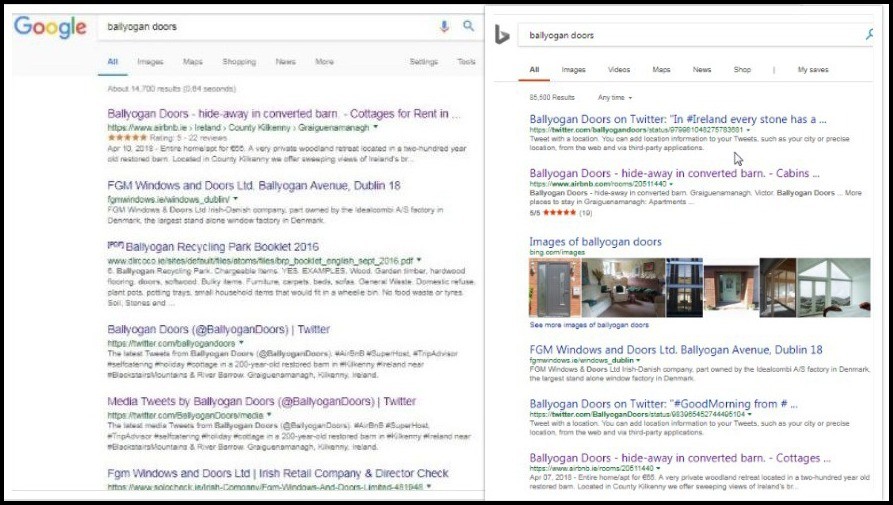 The travel/tourism/hospitality vertical recognised early on the value which social media could have on its revenue streams and customer relationships. Brands such as KLM and The Four Seasons Hotels and Resorts and The Ritz-Carlton Company made major financial commitments to ensure their continued dominance with their respective bases, as a result, the latter two have subsequently earned top 50 ranks globally amongst luxury brands using social media.
The travel/tourism/hospitality vertical recognised early on the value which social media could have on its revenue streams and customer relationships. Brands such as KLM and The Four Seasons Hotels and Resorts and The Ritz-Carlton Company made major financial commitments to ensure their continued dominance with their respective bases, as a result, the latter two have subsequently earned top 50 ranks globally amongst luxury brands using social media.
While it is true that anyone can ‘do’ social media, to generate results in 30-days such as we have achieved demands critical thinking, an OCD-level of commitment, best practices knowledge of social platforms, and yes, an ‘eye’ for creating resonate content helps (a great deal). As offered in my post Zero to Klout 40 in 12 Days we wanted to show the relevance and value of digital communications in building a brand (with absolutely no budget) in exactly 30-days. For those so interested we have the analytics documenting every nuanced gain. And, as I have mentioned previously, this has been an entirely organic, content-driven effort based on SEO and best practices knowledge.
Let’s be honest, a single #Airbnb or #TripAdvisor self-catering rental wouldn’t normally realise much of a digital impact. “Ballyogan”, as it was called when we took over, alone didn’t differentiate the holiday let from our search results which included a city, a horse and his pedigree, a horse race, a recycling park, innumerable streets, &c. &c. The door being the initial point of welcome to visitors, particularly in the hospitality industry, made adding “Doors” to the brand name logical.
At 188 tweets we ‘over-delivered’ against the best practices of three-per-day but it’s hard to argue with the results. Of the top twenty tweets, the first has found special resonance. The top twelve tweets (each with a minimum of 1500 impressions) have earned a combined 45,686 impressions, or 46.1% of our 30-day total of 98,300.

We recognise that both Klout and Kred exist on borrowed time, but free influence analytics still offer value. (Not sorry) it doesn’t get old when your efforts for a client are apace with a national or regional tourist board.
The profile bio has been rewritten four times to account for achieving SuperHost status, adding the Tripadvisor page, changing the #bnb to #selfcatering, and specifically identifying geographic locations to aid potential guests. We published two Twitter Moments and drafted additional ones for the owner to fully develop as time allows. We did only nominal follower management and used ManageFlitter a total of six times to ensure that Follower and Following numbers were on par. Increased Airbnb and Tripadvisor weekly views are consistent with hospitality industry social media conversion of 11% of the Twitter profile views (enquiries have been received but no bookings as of this writing). 30-days is our hard-stop managing the account, our last tweet was the evening of 15 April.
In answer to the question of our title, we’ll respond by posting the results from Bing and Google for the search term “Ballyogan Doors” where our various efforts dominate the first five positions against a Dublin-based business (whose customers our client hopes to have as guests).
What Story Do You Need Told?






 Of course, there is an element of personal branding to this but less than might be found outside of the Nordics. Resonance drives our desire. We want their end products (or experience) for ourselves because authenticity and transparency (even so far as breaking down precise costs) are so integral to their brands.
Of course, there is an element of personal branding to this but less than might be found outside of the Nordics. Resonance drives our desire. We want their end products (or experience) for ourselves because authenticity and transparency (even so far as breaking down precise costs) are so integral to their brands.

 Equally so the perfection offered by August Bard Bringéus.
Equally so the perfection offered by August Bard Bringéus. 




 It started with a scarf, le carre
It started with a scarf, le carre 











 shy of the finish line
shy of the finish line









 crunchy on the outside. The yellow sugar coating and the evaporating moisture of the gooey middle forming a crust. It is still the only way I can eat them – poke a hole in the package wait 24 hours and devour! Each one makes me 6 again and knowing fully and completely that someone (outside of my family) loved me. I was (and still am) the single yellow Peep in the sea of pink, purple and blue Peeps, utterly unique and special because Mrs. Dwyer made me so!
crunchy on the outside. The yellow sugar coating and the evaporating moisture of the gooey middle forming a crust. It is still the only way I can eat them – poke a hole in the package wait 24 hours and devour! Each one makes me 6 again and knowing fully and completely that someone (outside of my family) loved me. I was (and still am) the single yellow Peep in the sea of pink, purple and blue Peeps, utterly unique and special because Mrs. Dwyer made me so!


















